The truth is, as we become older, several things happen that can impact how fit we are and how well we operate in daily life. For instance, when hormone levels drop, our muscles atrophy, our bones deteriorate, and our fat “insulation” improves. But then, aging comes with its own challenges. Nevertheless, aging doesn’t have to be something you accept without a struggle.
What then is the key? Well, in my opinion, the key is exercise. Maintaining a solid fitness regimen, particularly one that focuses on weight training, is among the most essential activities you can undertake as you age. The aging process may be slowed down and even reversed with the right workout program.
Furthermore, using weights or machines during exercise can boost our bodies’ naturally occurring levels of hormones that help us grow muscle, slow down the rate at which we put on fat, and raise our overall lean body mass. Our bodies require more energy to stay alive and active each day as we gain strength and muscle mass. This is because, even when at rest, muscular features require more calories.
It goes without saying that a healthy lifestyle requires both exercise and good nutrition throughout one’s life, and as we get older, our needs change more and more. As a result, it would be nice and healthy if seniors exercised frequently. Choosing an active lifestyle over a sedentary one is undoubtedly one of the best ways to keep your body fit and healthy.
If you are a senior or you probably have some seniors around, you’ll learn about the advantages of exercising for seniors in this article, along with the ten best exercises for seniors that could be helpful to their health.
Exercise’s Health Advantages for Older Adults
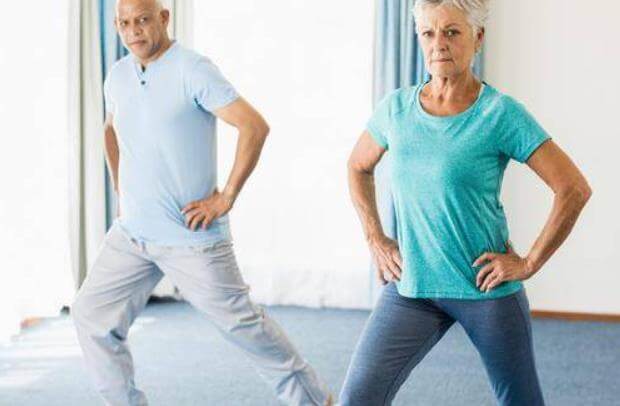
Seniors have distinct motivations for maintaining their physical fitness from younger generations because of the biological changes that occur as we age. Even while everyone, regardless of age, can benefit from exercise, the benefits for older citizens’ health are particularly remarkable. According to doctors, researchers, and academics, elders should maintain as much activity as they can (without overdoing it) to improve their overall health. In simple terms, exercise promotes a healthier, longer, and happier life in older persons.
Exercise in seniors can have various advantages, such as:
- Regular exercise enhances an elderly person’s capacity to walk, cook, wash, eat, dress, and use the lavatory.
- Exercise increases independence in seniors. Exercise is one of the finest ways for older persons to maintain independence if self-reliance is a priority.
- Because falling concerns elderly people more than it does younger people, exercise helps them keep their balance. According to the National Council on Aging, an elderly person dies from a fall every 19 minutes, and an older person is sent to the emergency room every 11 seconds for a fall-related injury.
- Although falls are not comparable and avoiding them is exceedingly difficult, regular exercise significantly lowers the risk of falling by 23%.
- Regular exercise results in more energy. Despite what might seem counterintuitive, being inactive drains your energy while being active recharges it. Exercise of any intensity encourages the production of endorphins, vital neurotransmitters associated with pain relief and a sensation of well-being.
- You can ward off stress hormones, get a good night’s sleep, and generally experience more energy and live thanks to endorphins.
- Heart disease, osteoporosis, depression, and diabetes are common and frequently fatal disorders among older adults. However, exercise helps prevent and combat disease.
- Exercise lessens your chance of falling and breaking bones
- Exercise lessens the chance that you may die of coronary heart disease.
- Exercise lowers your risk of acquiring diabetes, colon cancer, and high blood pressure.
- Lower your blood pressure (which is especially helpful if you have hypertension).
- Exercise Combat depression, anxiety, and irritability.
- Exercise boosts your muscular endurance and strength.
- Exercise keeps your joints, muscles, and bones in good shape.
- Exercise control arthritic symptoms and joint swelling
The Ideal Senior Exercises
Exercise is important for older people, nevertheless, it can be difficult to begin. If you haven’t exercised in a while, returning to an energetic way of life can be somewhat scary. Additionally, there’s a significant likelihood that the exercises you were once used to aren’t the best for seniors. It’s crucial to consult a doctor before beginning an exercise program to ensure you’re healthy enough for it and to learn which exercises are best for your present fitness level.
1. Walking

Walking is one of the most convenient and low-stress types of exercise. Goals for distance traveled and steps taken vary from person to person because some seniors find walking to be more difficult or easier than others. A healthy lifestyle recommendation for the general public is 10,000 steps per day, however, people who have trouble walking or suffer from joint pain may choose to set a lower goal. According to study/research, walking 10,000 steps per day could reduce mortality risk by 46% over the next ten years. Walking helps you live a healthy lifestyle, builds muscles, and reduces your risk of developing colon cancer, diabetes, heart disease, and stroke.
2. Tai Chi
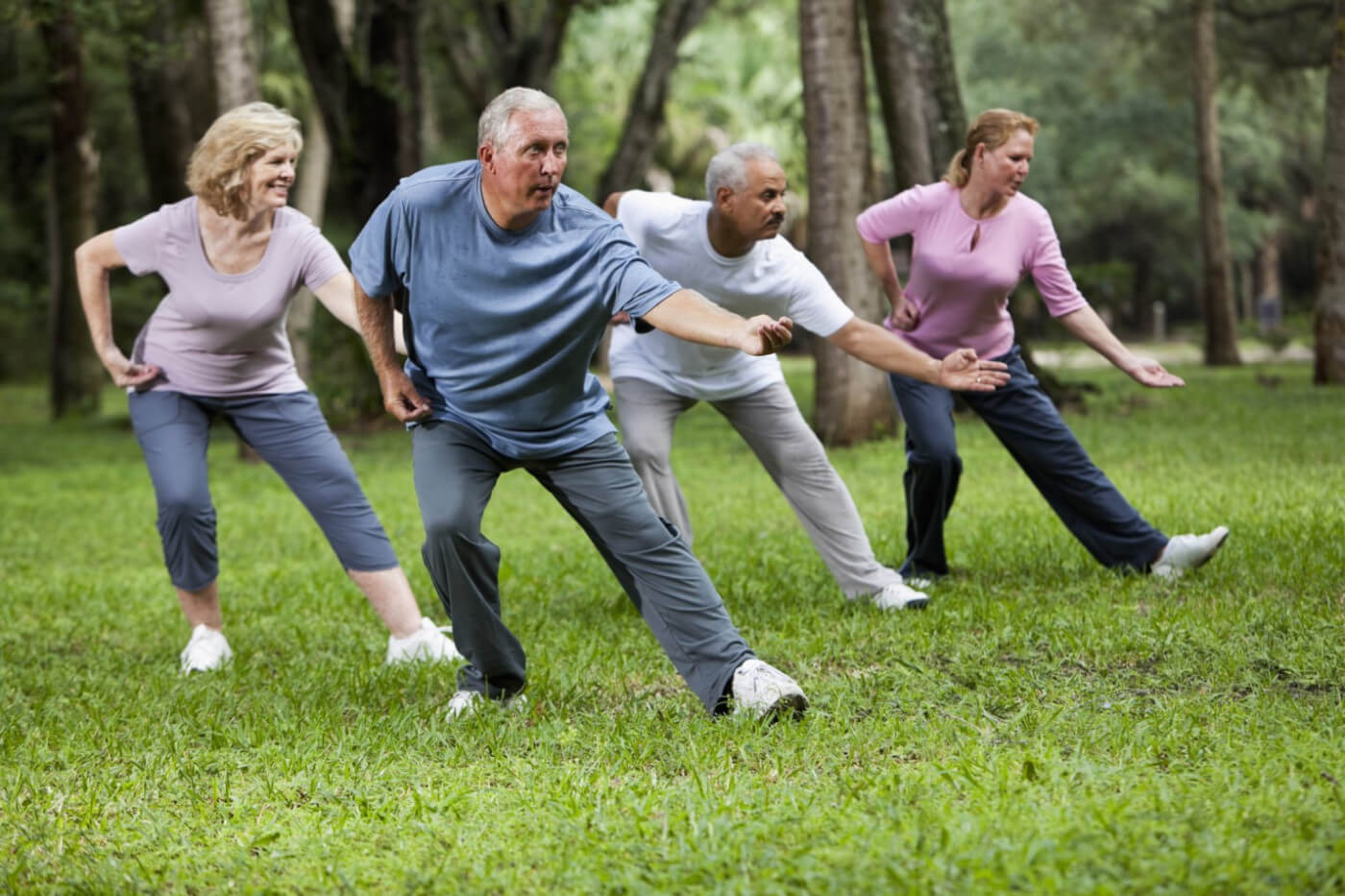
Asian traditions are the foundation of the mind-body exercise known as tai chi. It mixes traditional Chinese medicine, philosophy, and martial arts. It is widely acknowledged as one of the workout methods that promote health the most and has been proven to have considerable positive effects on health. This form of exercise is famous for its many benefits including enhancing intellect, enhancing immunity, and improving balance. For elders, it is a fantastic kind of exercise.
3. Water Aerobics
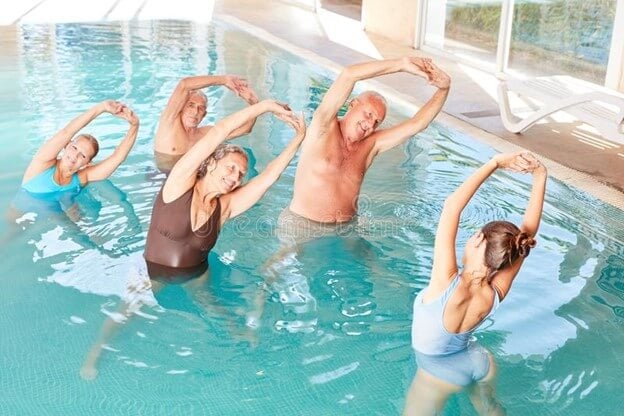
Water aerobics has recently gained enormous popularity among people of all ages. But for seniors in particular, this exercise is very helpful. For people with arthritis and other types of joint discomfort, exercising in the water is perfect since the buoyancy of the water reduces the strain on your joints. Water also provides natural resistance, thus strength training doesn’t require the use of weights. Your strength, flexibility, and balance will all increase thanks to water aerobics workouts, which put no strain on your body.
4. Cycling
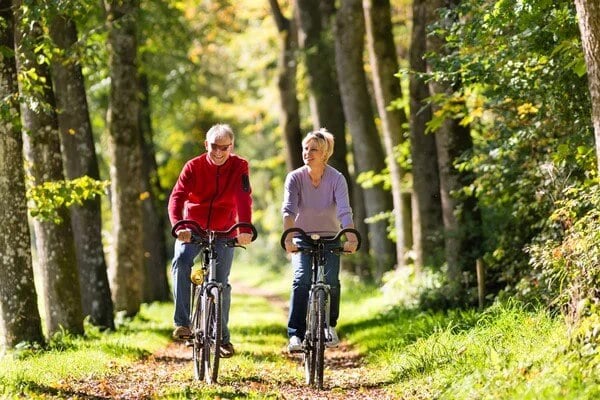
Elderly people can benefit greatly from cycling, which is a great cardiac workout. An outdoor bike or a stationary bike can be used for cycling. It boosts blood flow to the heart and lungs and works several muscle groups, including the quadriceps and hamstrings. This workout has a low impact. In particular, if you have joint or muscle discomfort or dysfunction, these exercises are good for you because they are easier on your joints and muscles.
5. Dumbbell strength training
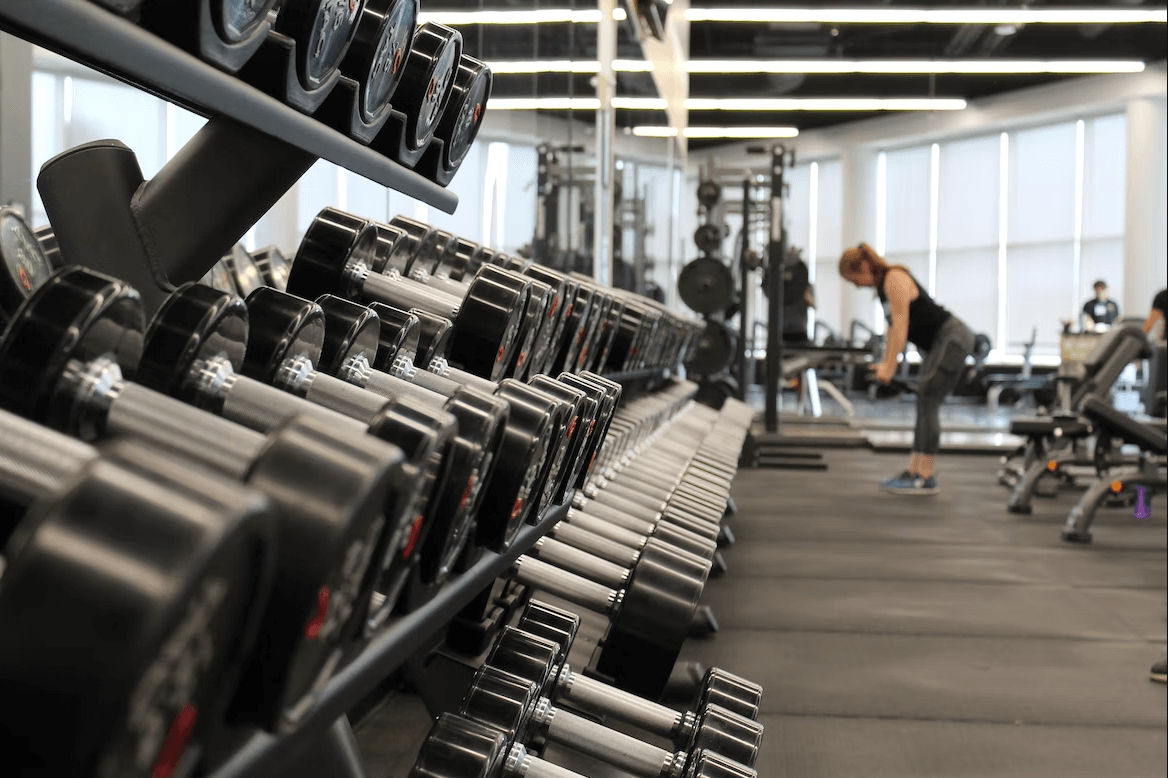
In addition to aiding weight management, this physical activity has been demonstrated to help with the symptoms of melancholy, osteoporosis, diabetes, and back discomfort. Additionally, lifting weights increases metabolism and improves glucose regulation. If they are carried out safely, dumbbell exercises are among the finest ways for seniors to build strength. Seniors can isolate specific muscular parts to strengthen them with dumbbells, which also enhances balance and flexibility.
6. Pilates
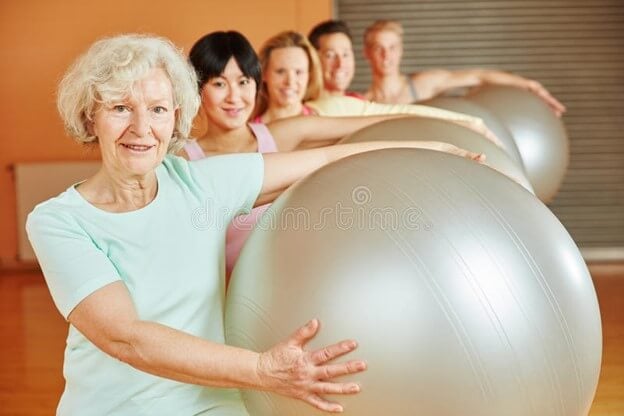
Looking back in time, this form of exercise could have been around for a long time (a century ago). And since the emergence of this low-impact exercise, Pilates has proven to be very effective and beneficial to seniors especially. Pilates generally uses mats, pilates balls, and other inflatable accessories to assist in building strength without the strain of more strenuous activities. Pilates exercises enhance breathing, alignment, focus, and core strength, which has demonstrated that older persons who practice Pilates have better balance, stronger core muscles, and greater flexibility.
7. Chair Yoga
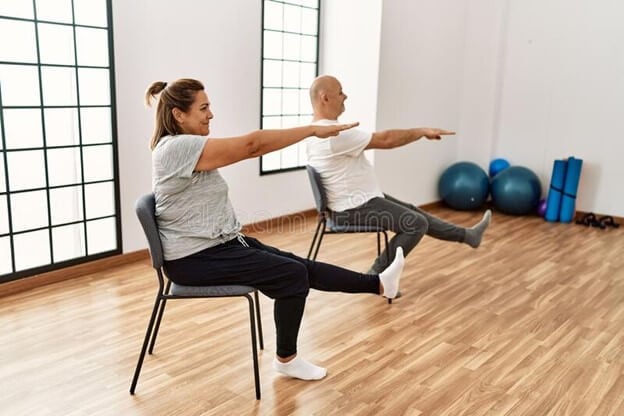
Chair yoga, like water aerobics, is a low-impact exercise that enhances muscle strength, mobility, balance, and flexibility which are all essential elements of senior health. Proudly a more accessible style of yoga than more traditional ones, chair yoga puts less strain on the muscles, joints, and bones. Additionally, chair yoga has been demonstrated to enhance older persons’ mental health. Regular chair yoga practitioners report better sleep, fewer cases of depression, and an overall feeling of well-being.
8. Resistance band workouts
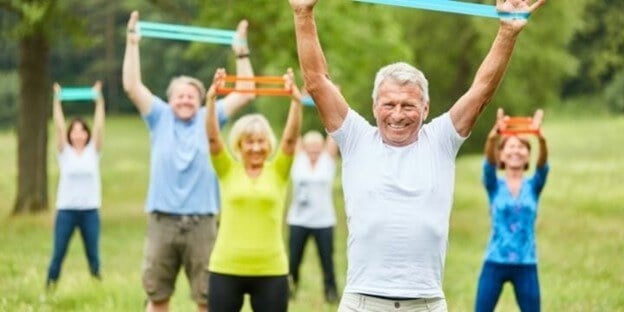
In this type of workout, elastic rubber strips will give resistance while putting less strain on your body. Exercises with resistance bands are simple to use and suitable for both beginners and experts. Resistance band workouts are perfect for at-home training because the materials are very inexpensive upfront, which is why this kind of exercise is becoming more and more popular among seniors. These exercises are also excellent for strengthening your core, which enhances balance, mobility, and posture.
9. Body weight workouts
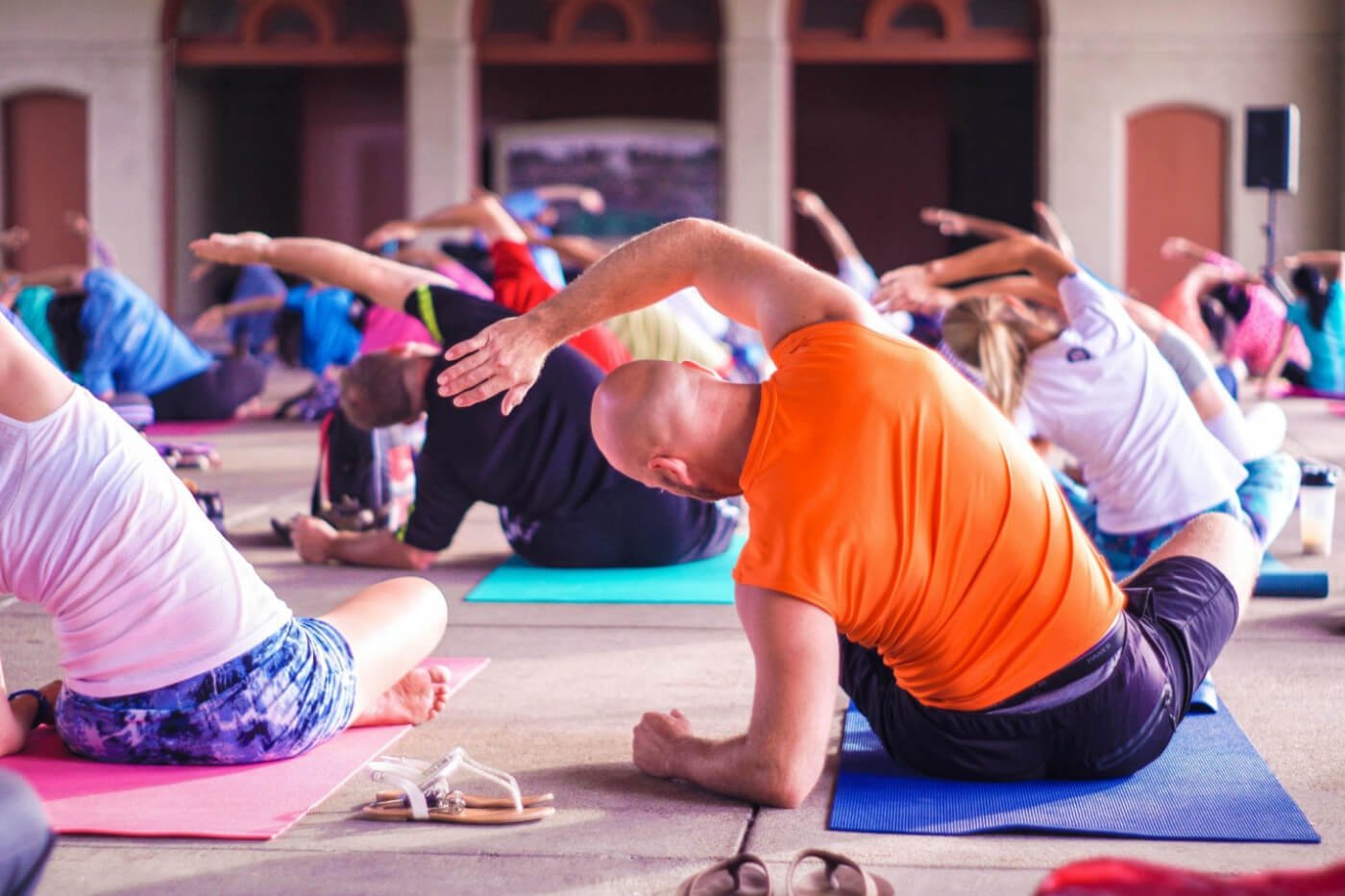
For older people, losing muscle can be heartbreaking and incapacitating. A third of elderly people suffer from severe muscle loss, which can cause hormonal imbalances, a reduction in protein metabolism, and other issues. One of the best strategies to combat the consequences of muscular atrophy in older persons is through bodyweight exercises. The affordability of body weight exercises is one of their main advantages. The equipment needed for bodyweight exercises is minimal; for the majority of bodyweight exercises, workout attire, and a mat to cushion impact with the floor are needed.
10. Squats

When done the right way, squatting can be very effective for seniors. Seniors who want to build muscle and strengthen their legs should try squats. It improves your performance in other workouts, reduces injury, and helps to stretch and strengthen your calf muscles. Seniors should, however, refrain from deep squats since they put additional strain on the knee joints. (which are a common site for arthritis).
You should have a few things in mind when you start your fitness adventure.
Dress appropriately to reduce your chance of injury. This includes wearing the proper footwear and clothing. Start carefully; don’t try to perform intense exercises right away. Start slowly and gradually up the workout’s intensity. If you encounter pain, stop exercising right away and go to the doctor if you experience any of the following: stomach discomfort, a racing heartbeat, pain, or dizziness.
Conclusion
There are many advantages to physical activity in addition to the obvious ones associated with keeping a healthy weight and being physically fit. Without using gym equipment, a few quick exercises at home can have a huge impact on your health. The good news is that leading an active lifestyle can help prevent certain diseases or, for those who already have them, lessen their uncomfortable symptoms. If you are susceptible to ailments, exercising may be the best defense against a bothersome ailment.
Furthermore, regular exercise enhances brain function. The discovery that the mind and body are much more tightly linked is one of the most astonishing achievements in health science. According to research, seniors who exercise regularly have better cognitive health. A healthy body is likely to translate to a healthy mind. According to a more recent study by the Alzheimer’s Research & Prevention Foundation, regular exercise can cut your chance of acquiring dementia or Alzheimer’s disease by almost 50%.
Additionally, merely exercising at home has a significant impact on your ability to live independently. In other words, staying active regularly increases your likelihood of aging in place in the comfort of your own home.
However, some workouts are inappropriate for senior people. Like running a distance, Deadlifts, exercise bench, leg lifts, stomach crunches, and Squats using weights or dumbbells. You should speak with an expert or instructor before engaging in exercises.

 By myulikeadmin
By myulikeadmin



